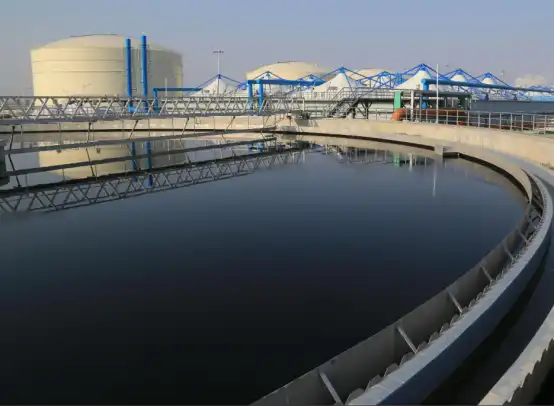- English
- French
- German
- Portuguese
- Spanish
- Russian
- Japanese
- Korean
- Arabic
- Greek
- German
- Turkish
- Italian
- Danish
- Romanian
- Indonesian
- Czech
- Afrikaans
- Swedish
- Polish
- Basque
- Catalan
- Esperanto
- Hindi
- Lao
- Albanian
- Amharic
- Armenian
- Azerbaijani
- Belarusian
- Bengali
- Bosnian
- Bulgarian
- Cebuano
- Chichewa
- Corsican
- Croatian
- Dutch
- Estonian
- Filipino
- Finnish
- Frisian
- Galician
- Georgian
- Gujarati
- Haitian
- Hausa
- Hawaiian
- Hebrew
- Hmong
- Hungarian
- Icelandic
- Igbo
- Javanese
- Kannada
- Kazakh
- Khmer
- Kurdish
- Kyrgyz
- Latin
- Latvian
- Lithuanian
- Luxembou..
- Macedonian
- Malagasy
- Malay
- Malayalam
- Maltese
- Maori
- Marathi
- Mongolian
- Burmese
- Nepali
- Norwegian
- Pashto
- Persian
- Punjabi
- Serbian
- Sesotho
- Sinhala
- Slovak
- Slovenian
- Somali
- Samoan
- Scots Gaelic
- Shona
- Sindhi
- Sundanese
- Swahili
- Tajik
- Tamil
- Telugu
- Thai
- Ukrainian
- Urdu
- Uzbek
- Vietnamese
- Welsh
- Xhosa
- Yiddish
- Yoruba
- Zulu

Industrial Wastewater Treatment
Industrial Wastewater Treatment: Methods and Prospects
Industrial activities produce large volumes of wastewater filled with diverse pollutants. Untreated, this wastewater endangers the environment, public health, and water resources. Thus, effective treatment is essential. This article delves into current treatment methods and future prospects.
Existing Treatment Methods
Physical Treatment
- Sedimentation: A basic method, it uses gravity to make heavier suspended solids in wastewater sink to the bottom of a tank. For example, in mining wastewater, large rock particles and sand can be removed this way. Adding coagulants can speed up the process by aggregating fine particles.
- Filtration: Filters with various pore sizes separate suspended particles. Sand filters are common for pretreatment, removing large - sized solids. Advanced membrane filtration like microfiltration (removing 0.1 - 10 micrometer particles), ultrafiltration (capturing smaller particles and macromolecules), and nanofiltration (separating small molecules and divalent ions) offer higher - level purification.
- Centrifugation: This method applies centrifugal force to separate components by density. In the food and beverage industry, it separates solid particles from liquid waste, such as pulp and seeds from fruit juice.
Chemical Treatment
- Neutralization: Industrial wastewater often has extreme pH. Alkaline substances like lime or sodium hydroxide are added to acidic wastewater, as seen in metal - plating industries. The reaction adjusts pH and precipitates some heavy metal ions.
- Oxidation - Reduction Reactions: Oxidizing agents like ozone, hydrogen peroxide, and chlorine break down pollutants. Ozone, a powerful oxidizer, can decompose complex organics in pharmaceutical wastewater. Reduction reactions, such as using ferrous sulfate to reduce hexavalent chromium, are also crucial.
- Chemical Precipitation: Adding chemical precipitants forms insoluble compounds with pollutants. For wastewater with heavy metal ions (lead, cadmium, mercury), substances like sodium sulfide or calcium hydroxide are used. The resulting insoluble metal sulfides or hydroxides are then separated.
Biological Treatment
- Activated Sludge Process: One of the most common methods, it mixes wastewater with microorganisms (activated sludge) in an aeration tank. Microorganisms break down organic pollutants through aerobic respiration. Oxygen is supplied, and the treated wastewater goes to a sedimentation tank. The activated sludge can be recycled. This process is widely used in food, textile, and paper - making industries.
- Biological Membrane Process: Microorganisms attach to a solid medium to form a biofilm. As wastewater flows over it, the biofilm decomposes pollutants. Biofilters, for low - strength wastewater, and moving - bed biofilm reactors, which can handle higher - strength wastewater, are examples.
Future Prospects

Technological Innovation
- Advanced Oxidation Processes (AOPs): AOPs like photocatalytic oxidation, sonochemical oxidation, and Fenton - like processes generate reactive free radicals to degrade persistent organic pollutants. Photocatalytic oxidation uses semiconductor materials under UV light to produce hydroxyl radicals, offering a more efficient and eco - friendly alternative to traditional oxidation.
- Nanotechnology - based Treatment: Nanomaterials, such as activated carbon nanotubes and zeolite nanocomposites, with high surface - area - to - volume ratios, show potential in adsorbing pollutants. Nanoparticles can also act as catalysts. Although still in its early stages, nanotechnology holds great promise for better treatment.
Resource Recovery and Circular Economy
- Recovery of Valuable Metals: Industrial wastewaters often contain valuable metals. New technologies like solvent extraction, ion - exchange resins, and membrane - based separation are being developed to recover these metals. For example, in the electronics industry, precious metals can be selectively retrieved from wastewater.
- Reuse of Treated Wastewater: Reusing treated wastewater for non - potable purposes like industrial cooling and irrigation is crucial for sustainable water management. Advanced treatment technologies are needed to ensure water quality for specific reuse applications.
Regulatory and Policy - driven Growth
- Stringent Environmental Regulations: Governments worldwide are implementing stricter regulations on industrial wastewater discharge. For example, the European Union's Water Framework Directive sets strict pollutant limits, forcing industries to upgrade treatment facilities.
- Incentives for Sustainable Practices: Governments offer incentives like tax breaks and subsidies for installing advanced treatment equipment and implementing resource - recovery projects, promoting more eco - friendly and cost - effective solutions.
In conclusion, current treatment methods have been effective, but with the increasing complexity of wastewater and the need for sustainable water management, continuous innovation is required. The future of industrial wastewater treatment lies in advanced technologies, resource recovery, and regulatory support, which will help protect the environment and promote the circular economy.
Learn about our latest products and discounts through SMS or email

